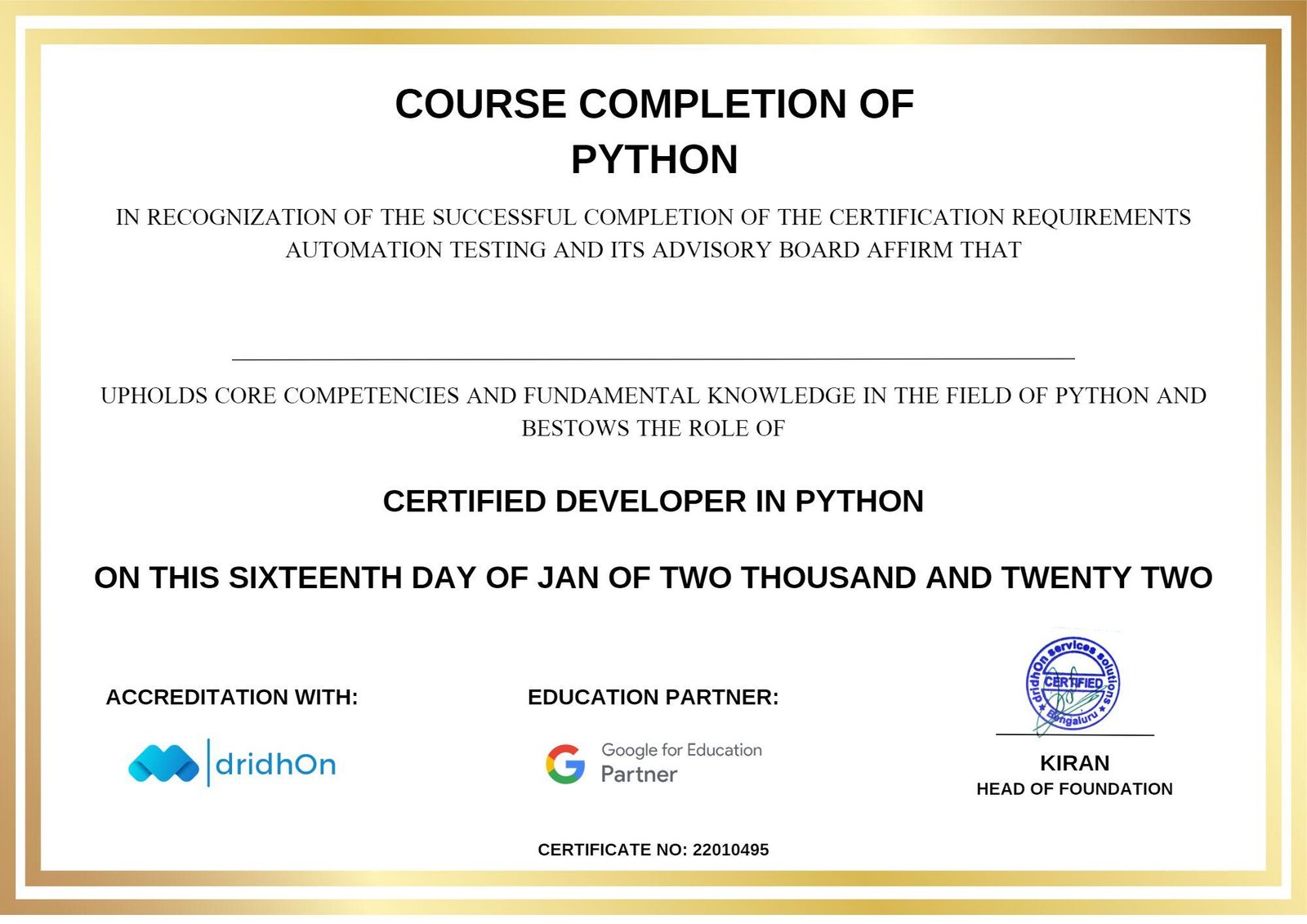7 Ways To Loop By means of An inventory In Python
페이지 정보
Writer Evan Stacy 작성일24-12-27 08:36 count32 Reply0본문
| Subject | 7 Ways To Loop By means of An inventory In Python | ||
|---|---|---|---|
| Writer | Evan associativeness Evan mbH | Tel | |
| host | grade | ||
| Mobile | evanstacy@yahoo.com | ||
| etc | |||
The time period "loop" refers to a bit of code that is executed repeatedly. So, a while loop executes until a certain condition is met. Within the code under, that condition is the size of the record; the i counter is about to zero, then it adds 1 every time the loop prints one merchandise within the listing. After i becomes higher than the number of gadgets within the checklist, the while loop terminates. Can you guess what the output will be? A reference (memory handle) to the unique information is passed to the function. Adjustments made to the parameter inside the perform have an effect on the unique information. Does Python training institutes go string by reference or value? In Python, strings are handed by object reference. If you cross a string to a perform, you're passing a reference to the string object.
If it is stored as a number then possibly setting the 12 months to zero is an appropriate solution to handle songs with an unknown year. In another software the year could also be required, by which case this would not be a recoverable error for that utility. For those who discover a mistake or inconsistency in the present state of the application, and have a option to appropriate the state without raising an error, then no need to boost an error, just right the state and keep going. The second case is a variation of the first. Right here the error will not be a new error, it's an error that bubbles up from a function that was known as.
True if two values usually are not equal. True if left value larger than proper value. True if left value larger than or equal to right worth. The and operator returns True if both statements are True. The or operator returns True if either statement is True. The not operator returns True if its associated assertion is False. This prevents forgetting to free the resource and likewise handles extra difficult conditions resembling freeing the useful resource when an exception happens while it is in use. Properties permit specifically defined methods to be invoked on an object occasion by utilizing the same syntax as used for attribute access. Python allows the creation of class strategies and static strategies via the usage of the @classmethod and @staticmethod decorators. The first argument to a class methodology is the class object as a substitute of the self-reference to the occasion. A static methodology has no particular first argument. Neither the instance, nor the class object is passed to a static methodology. Python supports (and extensively uses) exception dealing with as a technique of testing for error conditions and different "distinctive" events in a program.
Python was created in 1990 by Guido van Rossum in Holland. One of many goals of the language was to be accessible to non-programmers. Python was also designed to be a second language for programmers to learn due to its low learning curve and ease of use. Python runs on Mac, Linux, Windows, and plenty of different platforms. Interpreted: it will possibly execute at runtime, and modifications in a program are instantly perceptible. To be very technical, Python has a compiler. A syntax error is also referred to as a parsing error. When Python parses the program and finds an incorrect statement it is known as a syntax error. When the parser discovered a syntax error it exits with an error message without running anything. Placing key phrases in the flawed place. Even when a press release or expression is syntactically appropriate, the error that occurs on the runtime is known as a Logical error or Exception. In this example, this system asks the consumer to enter a quantity. If the consumer enters a string instead of a quantity, a ValueError will happen. The try-besides assertion is used to handle this error and print a customized error message. Whereas-Else: This statement is used to execute a block of code when the while loop completes efficiently. In this instance, this system prints the values of i from zero to 4 using some time loop.
When you use a for loop with a dictionary, you’ll see that it automatically loops over the keys. Python simply did the right thing for us. You could also be wondering why the keys printed in a unique order than they had been outlined within the dictionary. As you could recall from chapter 3, dictionaries are unordered, so once we iterate over it, the keys may very well be in any order. Now if you understand that the keys will be sorted, then you may do that before you iterate over them. Let’s change the dictionary barely to see how that works.


 JOIN
JOIN 





